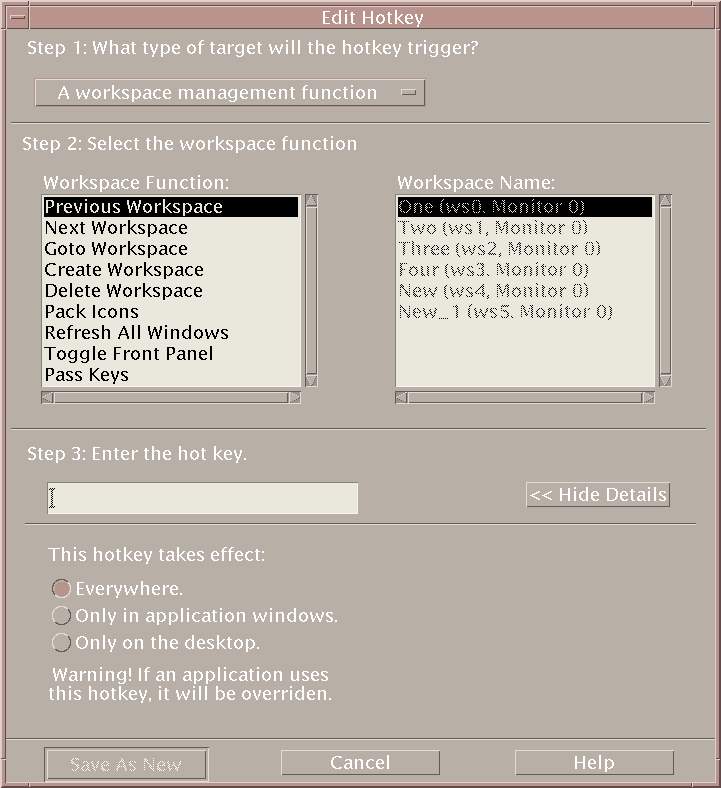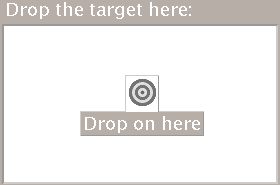To Create a Hotkey for an Application, Action, or Document
-
From the Hotkey Editor window, click New.

-
For Step 1, from the pull-down menu, select An application, action, document.
-
In Step 2, establish the target that the hotkey will affect.
-
Under Step 3, in the text field, type the keystrokes of your choice that will act as the hotkey.
To determine where the hotkey will be effective, click Show Details.
-
(Optional) Modify where the target event will be active and the path to the target event.
Unless specified the hotkey will be effective everywhere. You can also modify the hotkey's target name or path if no drag and drop option exists for the target.
-
Specify where the hotkey will be active.
-
Everywhere - The created hotkey takes precedence over an application assigned hotkey
-
Only in application windows - The hotkey is effective only in an application window
-
Only on the desktop - Hotkey is effective only on the backdrop of the monitor
-
-
Type the path to the target event that the hotkey will affect.
You may also click Browse to navigate to the target event directory.
-
Enter the command-line argument.
This permits you to have extra command line arguments associated with the target.
-
-
Click Save As New.
-
Click Cancel to close the dialog box.
-
In the main Hotkey Editor window, choose Save from the File menu.
This will activate the hotkey.
Once you have completed creating a hotkey, you can begin creating another new hotkey without exiting the current Edit Key dialog box.
- © 2010, Oracle Corporation and/or its affiliates

